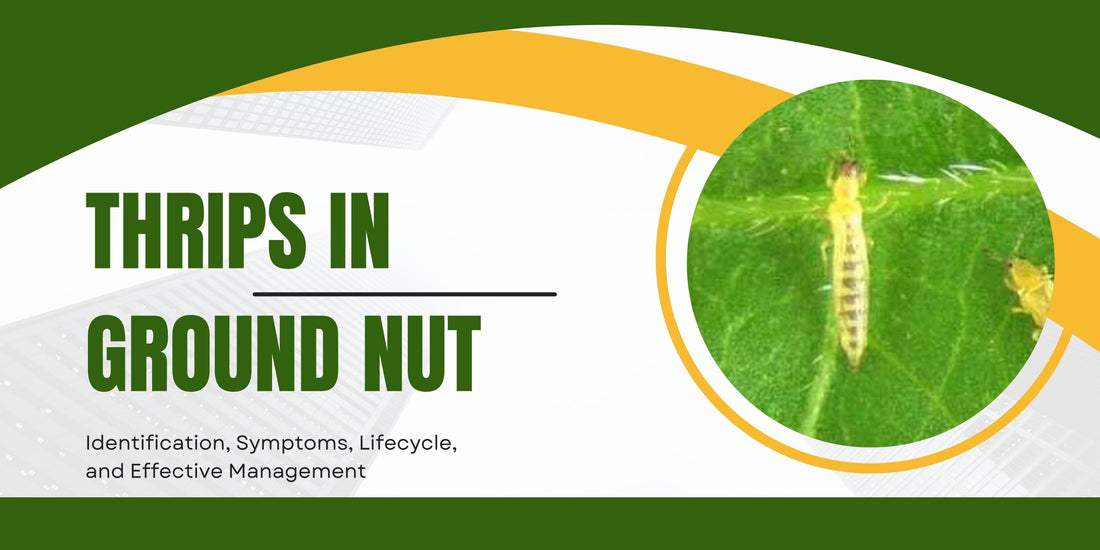
Thrips in Groundnut: Identification, Symptoms, Lifecycle, and Effective Management (Telugu: Thamara Purugulu)
Share
Telugu name: Thamara purugulu
Scientific name: Scirtothrips dorsalis
Identification of pest:
Nymph (young stage):
- Very small and thin.
- Body is delicate and can break easily.
- Light yellow in color.
Adult (grown stage):
- Wings have a fringed or hairy edge, like tiny feathers.
Life cycle
Nymphs and adults dark coloured with fringed wings. Female thrips lay 40-50 eggs inside the tissues of leaves and shoot. Egg period 5 days, nymphal period 7-10 days and adult period is 25-30 days. There are several overlapping generations.
Symptoms:
- Nymphs and adults suck sap from the surface of the leaflets.
- This results in white patches on the upper and necrotic patches on the lower surface of the leaves.
- It consists of distortions of the young leaf lets and patchy areas of necrotic tissue that puncture and split as the leaflets grow.
- Injury is normally seen in seedlings.
FAVORABLE CONDITIONS
- Warm and dry weather.
- Overcrowded and poorly maintained fields.
Economic Threshold Level (ETL)
Control measures should be initiated if:
- 5-10 thrips per leaf or visible silver streaking on leaves.
MANAGEMENT
Cultural Practices:
- Use thrips-resistant varieties (e.g., ICGV 91114, ICGV 00350).
- Intercrop cowpea with groundnut 1:4 ratio.
Biological Control:
-
Encourage natural enemies like ladybird beetles, lacewings, and predatory mites.
Chemical Control:
- Spray methyl demeton 25 EC 500 ml or dimethoate 30 EC 500 ml/ ha.
- For effective control of thrips we can use bio pesticides like Dr.Eliminator 250 ml/ acre.
- To target active thrips, apply insecticides in the early morning or late at night.
FAQ’s
1.What are the early signs of thrips in groundnut plants?
A: Silver streaks, curling, or crinkling of leaves. Thrips often hide on the underside of leaves, so inspect closely. Early detection is key to managing them effectively.
2.How can I control thrips without using chemicals?
A: Follow neem oil sprays, sticky traps, and planting resistant varieties can reduce thrip populations naturally.
3.When should I start checking for thrips in my groundnut field?
A: Begin scouting early in the growing season, especially during hot, dry weather, which thrips thrive in. Weekly checks are ideal.
